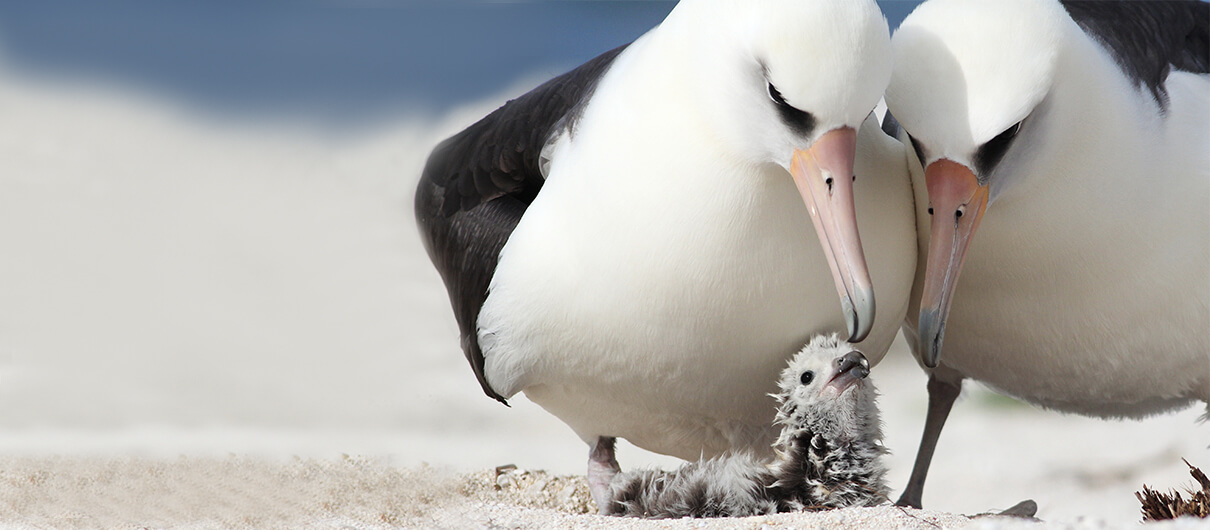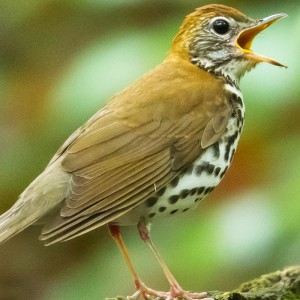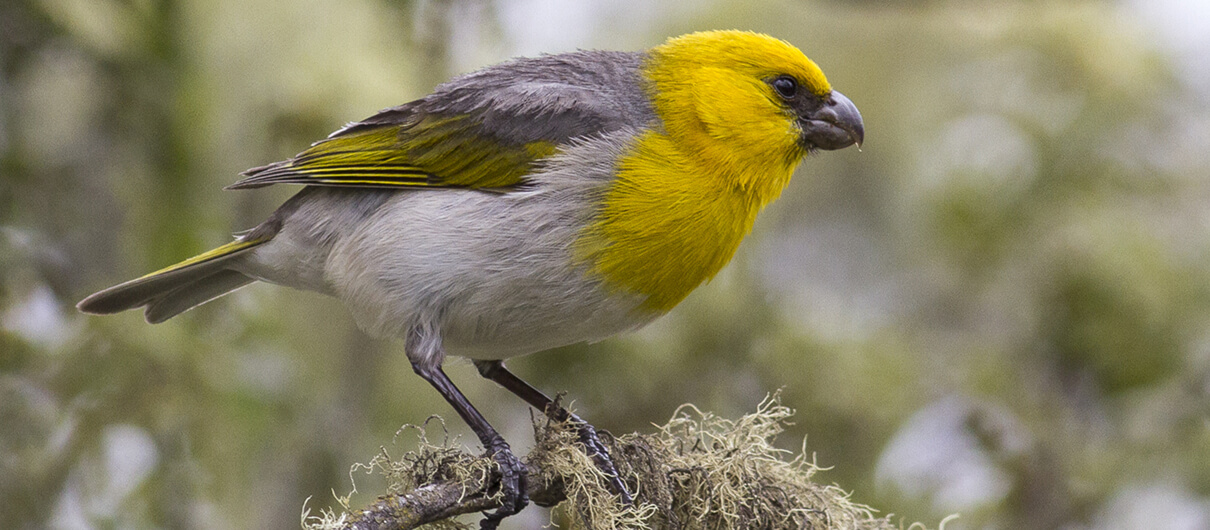Thanks to the generosity of ABC supporters, we have reached our campaign goal, but we are still accepting donations until September 30.
'A'ohe pu'u ki'eki'e ke ho'a'o 'ia e pi'i
No hill is too high to be climbed
In many ways, the threats facing the birds of Hawai‘i are representative of threats to birds everywhere: habitat degradation, invasive species, non-native predators, and lack of resources. American Bird Conservancy leads an integrated campaign that fearlessly tackles these threats, and we envision a future where Hawai‘i's birds are not just avoiding extinction, but are thriving. If you share our vision, please join our efforts today by making a gift for our Hawai‘i campaign.
Komo mai kau mapuna hoe
Dip your paddle in; join in the effort
In addition to serving as urgently needed matching funds for a grant from the National Fish and Wildlife Foundation, all funds raised in this campaign support work toward:
• Reforesting the Palila's habitat with native trees on the slopes on Mauna Kea;
• Preparing to reintroduce a new population of Kiwikiu (Maui Parrotbills) on Haleakala;
• Developing habitat models for Kaua‘i's highly endangered Puaiohi, ‘Akikiki, and ‘Akeke‘e;
• Establishing new breeding colonies for ‘A‘o (Newell's Shearwaters) and ‘Ua‘u (Hawaiian Petrels) within a predator-proof sanctuary at Kīlauea Point National Wildlife Refuge; and
• Building support for smart policy and increased funding to ensure effective, long-term conservation of Hawai‘i's native birds.
Please make your gift today. No amount is too small.
Malama ka aina
Take care of the land
At ABC, we believe in the innate worth of every species, from petrels to honeycreepers. Biodiversity is important not only for the wonder it inspires and the richness it brings to our world, but because each creature has a right to persist and to thrive regardless of the value it adds to human existence. Perhaps nowhere else on earth is this more keenly felt than in Hawai‘i, where love of the land and ecological stewardship are deeply ingrained. If you share our belief that the natural world has a right to persist and to thrive, then please help us reach our goal in Hawai‘i by making a gift today.
The Big Island
The Palila is a bright yellow honeycreeper with a beak specifically adapted to pry open the seeds of the mamane tree. Roughly 2,000 of these birds are restricted to a small patch of forest on the southwestern slope of Mauna Kea, due to decades of habitat destruction and introduction of numerous non-native species.
Since 2009, ABC, our partners in Hawai‘i, and thousands of volunteers have planted more than 140,000 mamane and other native trees in Palila habitat. In concert with a suite of conservation actions aimed at protecting these native birds and their vanishing habitat, ABC's efforts continue, and we need your help! Please consider making a gift on behalf of the Big Island's Palila today.
Maui
ABC's efforts on Maui will return the Kiwikiu (Maui Parrotbill) to an area that it has not inhabited in over 200 years: Nakula Natural Area Reserve on the Haleakala volcano. Although once plentiful throughout Maui and adjacent island Moloka‘i, there are fewer than 500 Maui Parrotbills remaining. Creating a new population will significantly increase the species' likelihood of survival.
ABC has partnered with Maui Forest Bird Recovery Project to plant approximately 10,000 native trees and shrubs in Nakula Natural Area Reserve to support the Maui Parrotbill reintroduction. The reintroduction is no small feat; it is a bold, high-impact initiative that is worth the long-term investment necessary to secure the future for Maui Parrotbills. Please make your gift to support the Maui Parrotbill today.
Kaua‘i
Since October, 2013, ABC and our partner Kaua‘i Forest Bird Recovery Project, have worked toward increasing the nesting success of three highly endangered species—the ‘Akikiki, ‘Akeke‘e, and Puaiohi–with benefits for all the other Kaua‘i endemic forest birds in the Alaka‘i Plateau.
We are utilizing remote sensing and acoustic surveys to develop habitat models and identify priority management areas for these three target species. In addition, we are protecting their nests with extensive rat control and nest monitoring in 160 acres of forest. You can be a part of this remarkable effort by making a gift today.
Seabirds
ABC and our partners are creating new, protected colonies for Hawai‘i's threatened seabirds. At Kilauea Point on Kaua‘i, we are in our third year of translocating endangered ‘A‘o (Newell's Shearwater) and ‘Ua‘u (Hawaiian Petrel) chicks into a coastal site protected by a sophisticated fence designed to keep out all non-native terrestrial predators.
On Moloka‘i, we are evaluating with partners the feasibility of creating a fenced protected area that would provide a home for Laysan Albatross displaced by rising sea levels from their nesting grounds in the low-lying Northwest Hawaiian Islands, as well as numerous other native Hawaiian seabirds.

Laysan Albatross, Cameron Rutt
Statewide
ABC supports and enables bird-smart legislation at the local, state and federal level.
On Kauai, we are working to create sensible policy to prevent the abandonment of feral cats in natural areas, and to design alternatives that are better for cats and birds. Outdoor cats kill approximately 2.4 billion birds every year in the United States alone, making predation by domestic cats the leading direct anthropogenic threat to birds.
In addition, as Hawai‘i expands its remarkable green energy goals, ABC is promoting proper siting of new wind installations to minimize risks to native birds and bats, which can be harmed by both habitat disruption and collisions with turbine blades.
Mosquitoes, introduced to the islands in the 1800's, are vectors for diseases that have devastated Hawai‘i's birds. ABC is a strong advocate for solutions that will end the threat of mosquito-vectored diseases for the benefit of birds and people.
ABC recently led a campaign calling for a $20 million increase in federal investment in Hawai‘i to bring funding levels closer in line with need. Hawai‘i, which supports 30% of the endangered species in the US, receives only 9% of the funding for species recovery. Please stand with us today.
BE A PART OF THIS CAMPAIGN BY MAKING A CONTRIBUTION















































